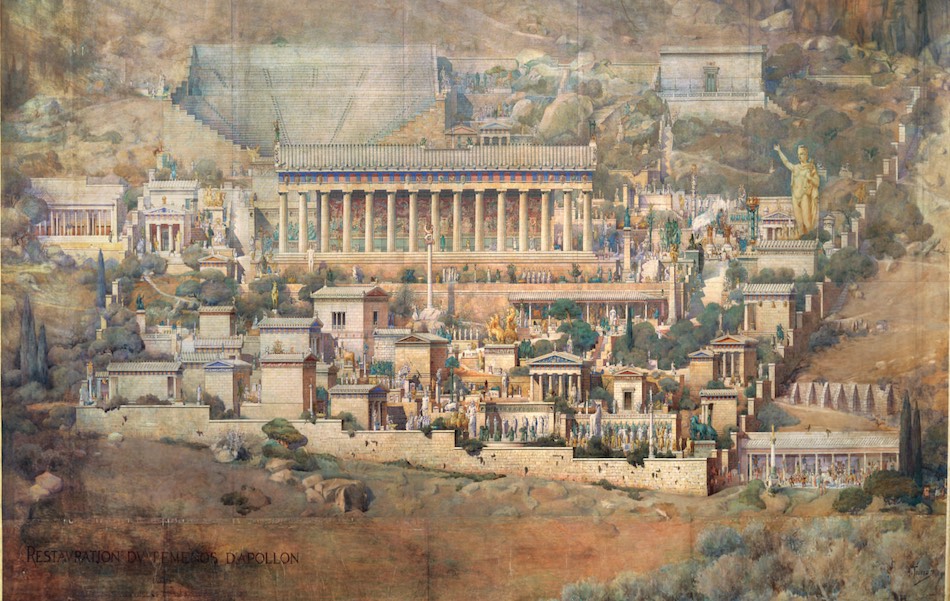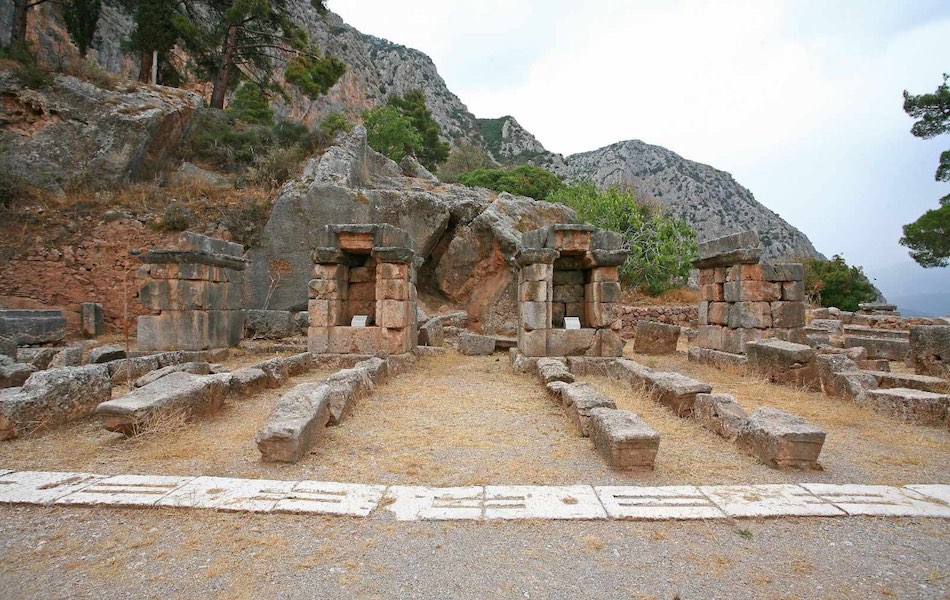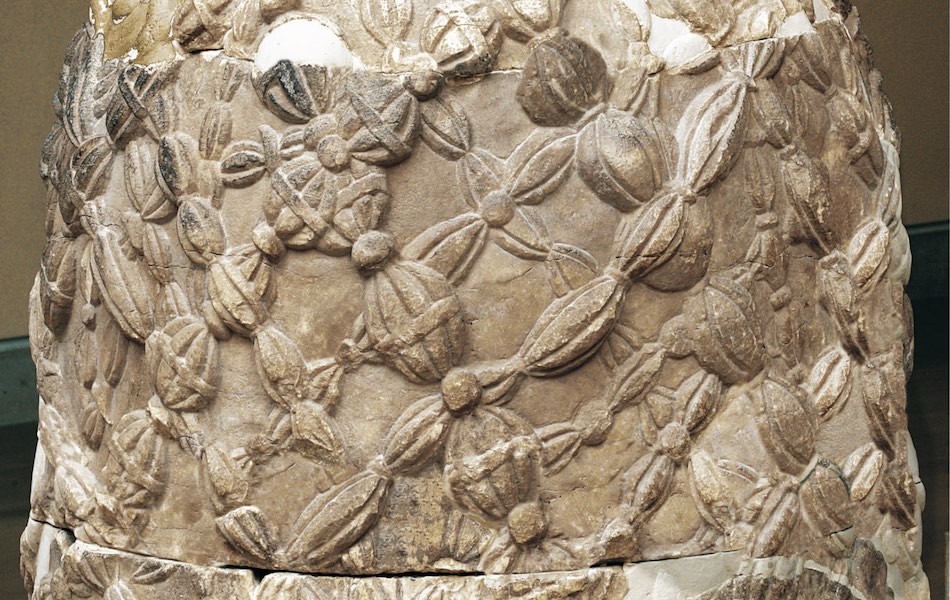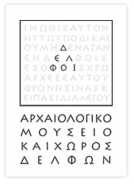This website uses cookies so that we can provide you with the best user experience possible. Cookie information is stored in your browser and performs functions such as recognising you when you return to our website and helping our team to understand which sections of the website you find most interesting and useful.
The Kastalian Spring
The Kastalian spring of the Archaic period
The purifying water of the Kastalian spring gushed from the slopes of the Phaedriada, called Hyampeia in antiquity, and flowed into a narrow gorge, where myth had it that the dread guardian of the oracle Python, the son of Earth, had its lair. The stone fountain of the same name was built along the side of the road that led to the precinct of Apollo in the early 6th c. B.C. (600-590 B.C.). It supplied the sacred oracle with water, which served for the purification both of priests as well as the faithful who entered the sanctuary. According to local tradition, the spring took its name either from the local hero Kastalios or the nymph Kastalia, the daughter of the river god Achelous.
During its long use over centuries, the Kastalian spring of the Archaic period, which is mentioned by Herodotus, Pindar, and many other poets, underwent many repairs and alterations. During the modern era it was restored in 1959 by the Greek architect Anastasios Orlandos, and again in 1977 by the French Archaeological School. In its present-day preserved form, it consists of a rectangular basin divided into a central and two side chambers. The water was channelled into the central section of the basin through a rock-cut water channel. The facade of the central chamber was decorated with semi-columns and four (or seven) bronze lion-head spouts. In the area in front of the central chamber, a paved courtyard was created at a lower level with stone benches along the walls.
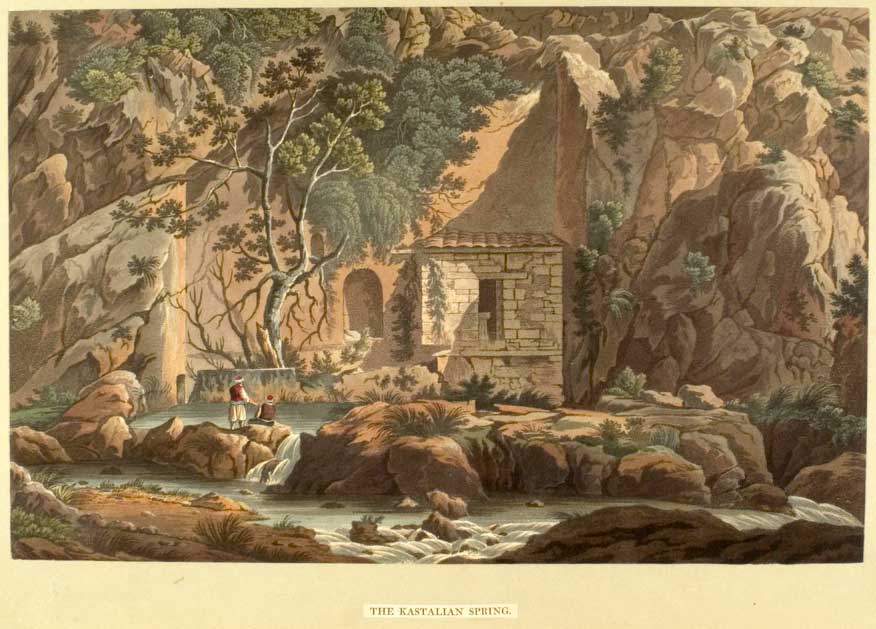
The rock fountain
In the 1st c. B.C., the Archaic fountain was replaced by another construction deep in the rock, at a distance of about 50 meters from the earlier one. The later fountain was entire cut out of the natural porous bedrock, and for this reason is often called the “rock fountain”. The system for collecting and supplying water, and the formation of its spaces, was nearly identical with that of the earlier fountain. Water was collected in a long and narrow basin (length: 10 m.) cut into the bedrock. Seven metal spouts and stone semi-columns to the right and left of the spouts adorned the basin’s facade. Water flowed from the spouts to the rectangular paved courtyard (11 x 3.6 m.), with eight rock-cut descending steps. The niches above the basin, which were also rock-hewn, received minor votives by pilgrams, normally figurines offered to the water-nymph Kastalia.
During the Ottoman period, one of the three large niches was converted into the apse of a small church dedicated to St. John the Baptist.
The cold, clean waters of the Kastalian spring continue even today to flow from a smaller and to be sure less impressive fountain, refreshing visitors on their way to the sanctuary.
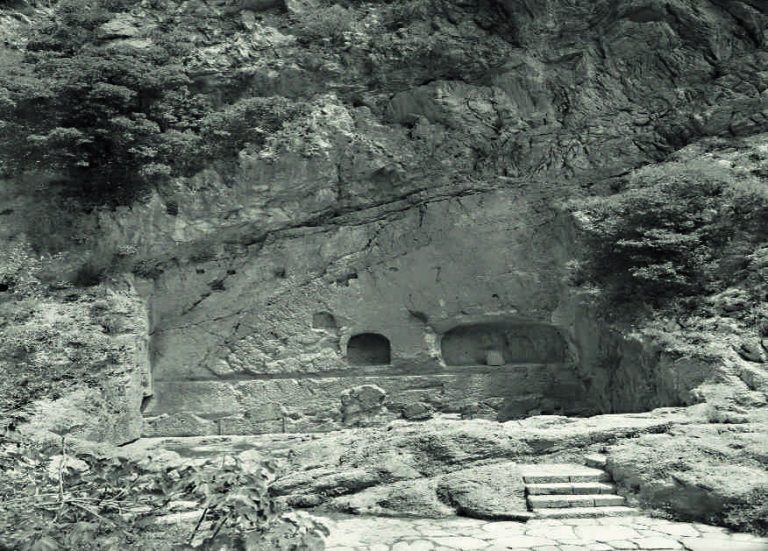
MUSEUM OF DELPHI



